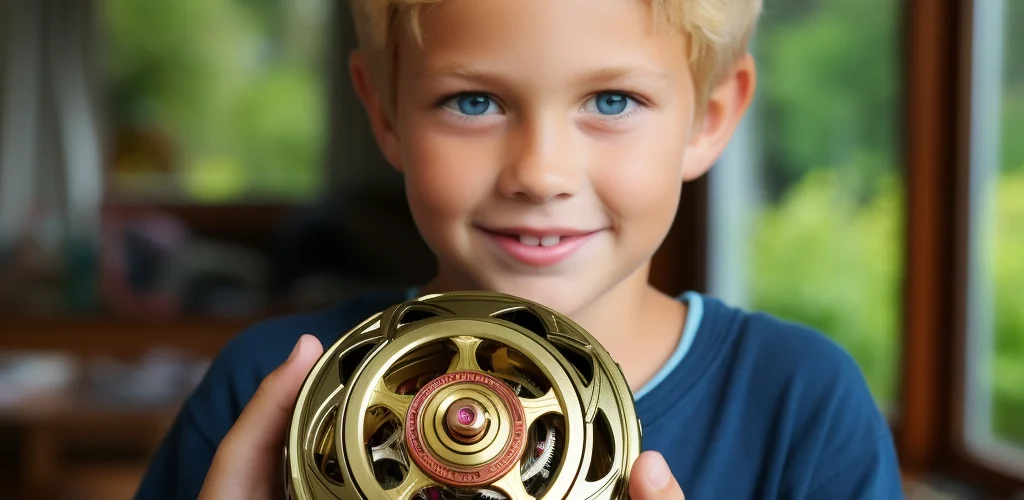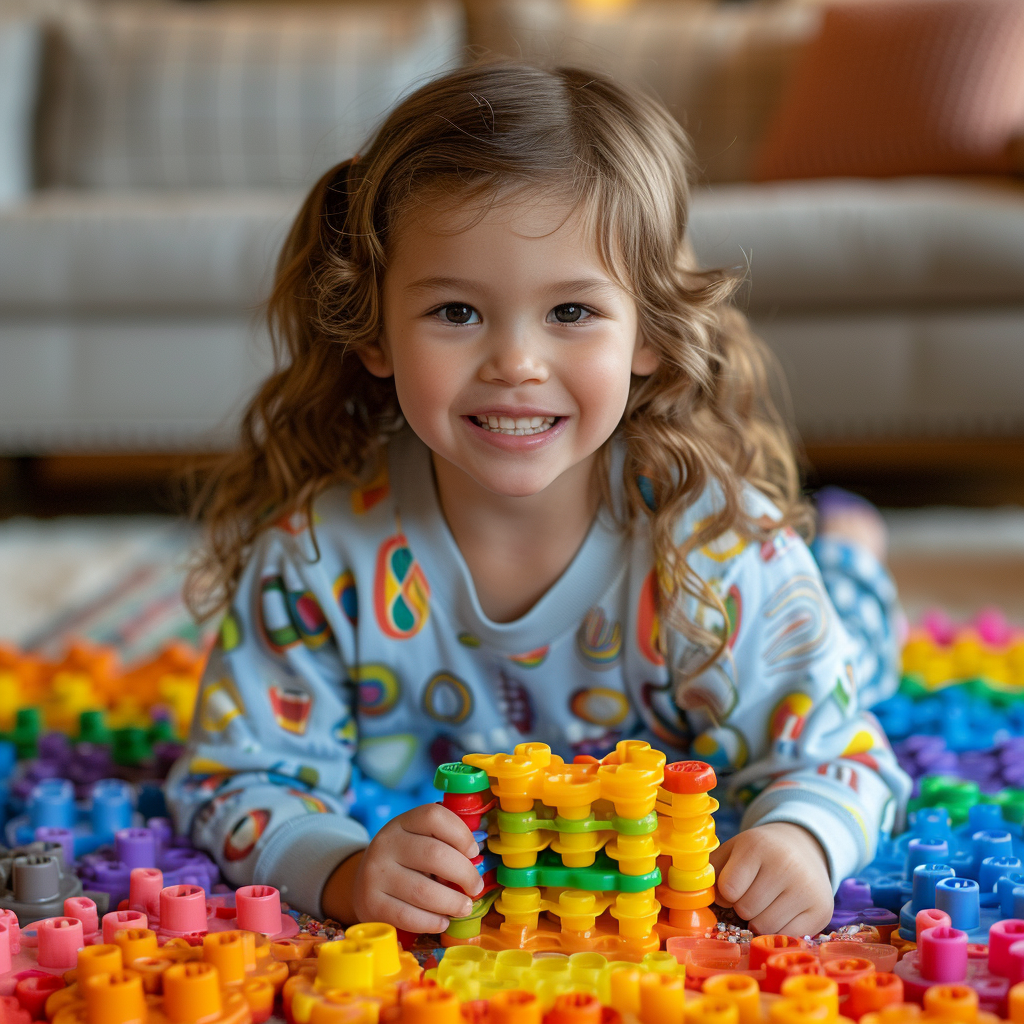The Surging Popularity of Fidget Toys: A Comprehensive Guide

Fidget toys have become immensely popular recently, especially among children, teens, and adults. Thanks to the discreet nature of high-quality fidget toys, classrooms can remain focused and attentive. Their use also reduces the tendency to fidget in more problematic ways.
What Are Fidget Toys?
Fidget toys are small, handheld devices. They are designed to be played with discretely. This helps the user focus, relieve stress, or keep their hands busy. They come in an endless variety. Some of the most popular types include fidget spinners, pop-its, marble and mesh toys, tangles, cubes, and more. Using them provides a calming, sensory experience for kids and adults alike.
Fidget toys are often recommended for people who fidget or have trouble focusing. This includes individuals with ADHD, autism, anxiety, OCD, and more. The toys give their hands something small and discreet to play with. This allows them to channel their need to fidget into a less disruptive outlet. This, in turn, helps them concentrate better, especially in classrooms or offices.
Different Types of Fidget Toys

There is indeed an endless variety when it comes to fidget toys. Here are some of the most popular types and styles:
- Fidget spinners – These are small toys with ball bearings that spin around a center. They exploded in popularity around 2017.
- Pop-its – are made of flexible silicone and have bubbles that pop when pushed in. They are one of the latest fidget crazes.
- Marble/mesh – These sensory toys involve manipulating marbles between obstacles.
- Tangles -These are made of twisted, flexible metal or plastic that can be bent, twisted, and popped.
- Cubes – Fidget cubes have buttons, switches, gears, and other sides to play with mindlessly.
- Squeeze toys: Stress balls and other squishy toys provide sensory relief.
- Spinners – Finger spinners are small disks you can spin around your fingers.
There are also putties, clickers, chains, rings, gears, beads, rollers, and countless other fidgets. New styles are constantly emerging, too!
Benefits of Using Fidget Toys
Many potential benefits come with using fidget toys appropriately. Here are some of the top perks:
- Improved focus – Playing with a fidget discreetly can help restless minds concentrate.
- Stress relief – The sensory input helps alleviate anxiety for many people.
- Releases energy – Fidgeting gives excess energy an outlet.
- Improves sensory processing – The toys provide helpful sensory input.
- Aids memory – Occupying the hands can free up the mind for better retention.
- Supports learning – Fidgeting helps some people process new info.
- Reduces disruptive fidgeting – Redirects the impulse into a quieter outlet.
Of course, individuals will experience varying benefits depending on their needs. But overall, fidget toys show great promise in helping kids and adults alike.
Concerns and Criticisms
While fidget toys have many benefits, they have also faced criticism and controversy. Here are some of the top concerns:
- Classroom distractions – Noisy or flashy toys can divert other students’ attention.
- Choking hazards – Small parts on some toys may be unsafe for younger kids.
- Unfair advantages – Some argue accommodations like fidgets give disabled students an advantage.
- Enables bad habits – Critics say fidget toys enable and validate disruptive fidgeting.
- Creates dependency – Reliance on a toy to focus may prevent learning other coping skills.
- Fad status – Schools note interest often fades when fidgets are no longer trendy.
As with anything, there are two sides to the debate over fidget toys in classrooms. With reasonable guidelines, they offer many upsides for neurodivergent students. But altogether, banning them may deny unique learners practical coping tools. There’s a balance to be struck.
A Brief History of Fidget Toys
Fidget toys are now a full-blown sensation but did not emerge overnight. Simple fidget devices like worry stones have been around for ages, but more complex designs only date back a few decades:
- 1980s – Simple fidgets like Koosh balls emerge as classroom aids.
- 1990s – Handheld games like Tamagotchi feed into the desire for stimulation.
- The mid 1990s – Catherine Hettinger invents the Tangle therapy toy.
- 1997 – Hettinger’s Tangle hits the mass market.
- The early 2000s – Autism awareness sparks more classroom fidget aids.
- 2017 – Fidget spinners have become a huge viral sensation.
- Late 2010s – Pop-its, among endless other novelties, join the craze.
The market is flooded with ingenious new fidgets that deliver unique sensory benefits. Their popularity shows no signs of fading.
How Fidget Toys Help Kids and Adults With Focus, Anxiety and Fidgeting
While often seen as children’s toys, fidgets provide clinically proven benefits for kids and adults alike. Read on to learn how these sensory devices help people manage symptoms of ADHD, autism, anxiety, and OCD. They improve focus, reduce fidgeting, and alleviate stress.
Helping Kids With ADHD Focus
Fidget toys first emerged explicitly to help students with ADHD and similar conditions improve their focus in the classroom. Kids with Attention Deficit/Hyperactivity Disorder tend to be more fidgety and struggle with sustained concentration during lessons.
Research has shown that having a simple fidget toy can significantly improve attention in kids with ADHD. A fidget spinner or cube can also reduce hyperactive impulses in kids with ADHD. Fidgeting occupies the restless hands, freeing up mental bandwidth to absorb the lesson. This allows ADHD students to learn with fewer disruptions.
Teachers, therapists, and parents alike have also seen great success using fidgets to help ADHD students self-regulate. While often stigmatized, fidgeting is right. Allowing it through toys is an effective way to enable concentration.
Managing Anxiety and Stress
Fidget toys provide a similarly therapeutic effect for anxiety in both children and adults. Simple sensory toys used discreetly give anxious hands and minds something to focus on beyond the stressor itself.
Whether stemming from a disorder or everyday pressures, anxiety floods us with nervous energy. Fidget toys allow channeling that energy into silent, subtle motion. This, in turn, reduces restlessness, eases muscle tension, slows rapid breathing, and mitigates many other anxiety symptoms.
Fidget toys also lower stress and anxiety by providing comfort through repetition and familiarity. Kids with autism often grow reliant on certain toys or motions. Fidgets allow them to bring these reliable rituals into school without disturbing others. The result is higher engagement and more effective learning.
Curbing Disruptive Fidgeting in Class
For students prone to fidgeting, toys offer a critical outlet to curb disruptive classroom behaviors. Instead of tapping feet, fidget toys allow the urge to be redirected. Clicking pens or rustling papers won’t distract classmates. It becomes a virtually silent activity.
Teachers commonly cite noticeable improvements in disruptive fidgeting behaviors when students have an appropriate sensory outlet. This allows classrooms to remain focused and attentive, thanks to the discreet nature of high-quality fidget toys. Their use reduces the tendency to fidget in more problematic ways.
Some dependence on the toys may form. Experts deem it a worthwhile tradeoff. This helps mitigate disruptions to teachers and fellow students. Occupational therapists and special needs teachers support fidget toys. They remain a frontline tool for curbing problematic fidgeting in academic settings. Their scores of benefits readily outweigh their minimal drawbacks.
Guide to Buying Fidget Toys: Best Types, Where to Shop In-Store and Online
With countless options on the market, choosing suitable fidget toys can be overwhelming for parents and teachers. Please read our guide to learn about the best fidget types for different needs. It includes popular retailers where you can shop in person and online. The guide also provides safety tips and critical factors to remember.
Most Recommended Types of Fidget Toys
With new styles constantly emerging, plenty of fidget toys are available today. But some types rise above the rest thanks to their versatility, simplicity, and quiet design. Here are some of the most universally recommended fidgets for school, home and work:
- Fidget Cubes – These feature multiple silent sides to fiddle with discreetly.
- Tangle Toys – Their flexible, manipulable shape is endlessly calming.
- Finger Spinners – These small, unassuming disks provide subtle motion.
- Marble and Mesh – Their manipulation delivers satisfying sensory input.
- Stress Balls – Squeezing these is simple yet effective for anxiety
- Putty/Dough – Great for idle hands without distracting noises.
- Fidget Spinners – These classics spin smoothly and silently.
- Pop-Its – While noisy, these offer stress relief through popless popping.
More straightforward, quieter fidgets are best for school and work. However, kids can benefit from a broader range of options at home based on their needs and interests.
Where to Shop for Fidget Toys In-Store
Fidget toys are available at big box stores, especially those with toy sections. Here are some top national retail chains for finding fidgets in person:

- Walmart – Look in the toy department or section with therapeutic aids.
- Target – Check endcaps on the toy aisles or dollar spot up front.
- Five Below – This discount store sells trendy toys for $5 and under.
- Dollar Tree – Find a limited but cheap selection here.
- Learning Express – Educational toy stores will have various fidgets.
- Michaels – Arts and crafts stores sell putties, cubes, and more.
- Claire’s – Tween accessory shops offer toy jewelry fidgets.
- Barnes and Noble – Bookstores carry cube sets and other desk toys.
Check locally for specialty toy stores, gift shops, and other retailers that may stock various fidgets. Pharmacies also commonly offer bare stress balls.
Best Online Shops for Fidget Toys
While major retailers like Amazon and Walmart sell fidgets online, there are many lesser-known e-commerce shops with more comprehensive selections worth browsing:
- Fidgets.com – All the top toys plus new releases in one place.
- FidgetFactory.com – Stress-relief fidgets for school, work and play.
- FatBrainToys.com – Educational toy retailer with thinking putty, cubes and more.
- Autism-Products.com – Fidgets to help sensory processing and focus.
- FunAndFunction.com – Toys for learning, focusing, and skill building.
- ArkTherapeutic.com – Sensory tools to improve concentration.
- NationalAutismResources.com – Products for home, school, and therapy.
- TheTherapyShoppe.com – Pediatric therapy tools, including great fidgets.
- Abilitations.com – Classroom aids for learning and focus.
Buying direct from manufacturers on sites like these ensures quality while offering the most comprehensive product ranges.
Fidget Toy Safety Tips
While extremely helpful, some fidget toys do come with safety considerations, especially for younger kids:
- Avoid small parts that could become choking hazards.
- Supervise play for children three and under.
- Opt for quieter toys to limit classroom disturbances.
- Look for smooth edges that won’t scratch or poke.
- Read labels and choose age-appropriate toys.
- Monitor for misuse and damage from aggressive play.
- Keep an eye on strings or cords that could pose strangulation hazards.
With reasonable precautions, fidget toys provide huge developmental upsides for sensory processing, focusing, and skill building. Follow safety best practices to unlock their many benefits.
Key Takeaways on Fidget Toy Benefits
- Help ADHD kids self-regulate and focus using appropriate sensory input.
- Alleviate anxiety and stress by channeling nervous energy into subtle motions.
- Curb disruptive fidgeting behaviors in classrooms by providing alternate outlets.
- Deliver therapeutic sensory stimulation that supports learning and development.
- Come in endless fun varieties, allowing discreet but engaging play for restless minds.
If used appropriately, fidget toys can make a profound difference. They improve concentration. They diminish anxiety. These toys also set neurodivergent kids up for success at home and school. Selecting the right fidgets wisely allows kids and adults to gain numerous cognitive benefits. They can also enjoy sensory advantages from these clever toys.
The Best Fidget Toys for Kids With ADHD, Anxiety and Autism
While people of all ages use them, fidget toys provide particular benefits for neurodivergent kids. The right sensory devices can greatly help young children with ADHD, anxiety, autism, and similar conditions. They assist in self-regulating emotions, improving focus, and managing fidgeting urges.
Toys Supporting ADHD
Children with ADHD think and behave differently thanks to brain differences affecting executive function, impulse control, and more. The best fidget toys for ADHD help kids channel their restless energy and short attention spans into subtle motions. Great options include:
- Fidget Cubes – Manipulating the silent multiple sides aids focus.
- Tangle Fidgets – Bending and twisting these plastic toys boosts concentration.
- Finger Spinners – Twirling these small disks is calming and quiet.
- Putties – Kneading and stretching putty engages active hands.
- Puzzle Toys – Manipulative like Rubik’s cubes require mental focus.
Look for fidgets that provide sensory input and occupy tasks without making noise. This allows ADHD kids to subtly fidget without disrupting class.
Managing Anxiety in Youth
Childhood anxiety has many sources, and the distraction and comfort of fidget toys can be very soothing. Some top picks for anxious kids are:
- Stress Balls – Squeezing these is calming and discreet.
- Play Dough – Molding and rolling dough is deeply relaxing.
- Fuzzy Toys – Stroking soft and fuzzy textures alleviates nerves.
- Spiky Balls – Running hands over spiky surfaces provides sensory input.
- Worry Stones – Rubbing smooth stones is comforting and grounding.
Simple, textured toys kids can stroke or squeeze help self-soothe anxiety and healthily redirect nervous energy.
Supporting Kids with Autism
Fidget toys help autistic kids manage sensory overload, release energy, and cope with transitions. Great options include:
- Chewelry – These rubbery necklaces and bracelets provide oral stimulation.
- Pop-Its – The sounds and motions are satisfying.
- Spinners – Twirling toys channel excess energy.
- Weighted Toys – The pressure is regulating and reassuring.
- Liquid Motion Toys – Watching these is visually soothing.
Look for toys with textures, sounds, weights, and movements that deliver specific sensory input autistic kids seek. Having one suitable fidget can make school and therapy much more manageable.
Where to Shop for Fidgets for Kids
Many major retailers carry fidget toys suited for kids, but specialty stores offer more comprehensive selections. Good places to shop include:
- Learning Express Toys is an educational specialty toy store.
- Fat Brain Toys – Online shop with toys that build skills.
- Ark Therapeutic – Sensory tools to help kids focus.
- Fun and Function – Toys for learning and development.
- National Autism Resources – Products supporting home and school success.
- The Therapy Shoppe – Pediatric therapy aids, including great fidgets.
Seek out toys labeled for specific needs like ADHD, autism, and anxiety. Avoid small parts that could pose choking hazards for little ones. With the right tools, kids can build critical coping and self-regulation skills.
Fidget Toy Alternatives Parents Can Try
For parents looking to save money or take a DIY approach, simple household items can also be used:
- Pipe cleaners – Twisting these into shapes engages hands.
- Silly putty – Great for stretching and molding absentmindedly.
- Paper clips – Linking these together creates a chain.
- Rubber bands – Snapping and stretching help kids focus.
- Coins – Try rolling or stacking coins quietly.
- Beads – Stringing beads aids concentration and motor skills.
- Keyrings – Looping keys onto a ring occupies restless fingers.
Almost any household object manipulated silently and discreetly can stand in as an effective fidget. Get creative to find options already on hand.
The benefits of equipping a neurodivergent child with a suitable fidget toy often prove immeasurable. With the proper selection, kids can self-regulate attention, emotion, and behavior. This removes obstacles to learning, socializing, and developing to their full potential.
Should Fidget Toys Be Allowed in Classrooms?
As fidget toys grow mainstream, debate continues over allowing them in classrooms. Supporters cite cognitive benefits for neurodivergent students, while critics argue they become distractions. Here, we explore the pros and cons of permitting fidgets in academic settings.
Arguments for Allowing Fidget Toys in Class
Proponents of permitting fidget toys in schools emphasize the many upsides:
- Help students with ADHD, autism, and anxiety self-regulate.
- Improve focus and attention by occupying hands.
- Provide alternatives to disruptive fidgeting behaviors.
- Give outlets for excess energy in kids who need movement.
- Support the ability to absorb and retain lessons.
- Enable stressed kids to self-soothe anxieties discreetly.
- Reduce sensory overload that inhibits learning in class.
- Offer tools to succeed without medicating kids unnecessarily.
- Allow students with special needs to utilize recommended accommodations.
With proper guidelines, advocates view fidgets as invaluable coping tools for neurodivergent learners.
Arguments Against Allowing Fidget Toys in Class
Those arguing against in-class fidget toys present counterpoints like:
- Potential classroom disruption from noise or flashing.
- Over-reliance on toys may prevent learning self-regulation.
- The unfair advantage compared to students without fidgets.
- Liability if misused as projectiles.
- Hygiene issues if toys are shared or mouthed.
- Safety risks from choking hazards.
- Distraction to other students, especially those with ADHD.
- Creates two sets of rules for students with and without disorders.
- It sets a precedent allowing “toys” to bypass school conduct codes.
Critics urge relying on alternative coping skills over toys kids grow dependent upon.
Best Practices for Allowing Fidget Toys
Most experts recommend a balanced approach, allowing fidgets with reasonable guidelines:
- Teacher approval is required to enable specific fidget devices.
- Toys should be small, quiet, and discreet. No exceptions.
- No sharing between students for hygiene and safety.
- Focus on specific therapeutic benefits, not entertainment.
- Usage may be revoked if rules are violated.
- Alternatives like silly putty are allowed for students without disorders to prevent inequity.
- Accommodations like fidgets are disclosed only on a need-to-know basis.
- Parents and therapists are involved in the approval process.
- School counselors help students use responsibly and phase off if able.
With structured policies, fidget toys can provide exceptional cognitive support to neurodivergent students in most classrooms. Altogether, banning them risks depriving students of effective learning aids.
Providing fidget tools to kids with ADHD can greatly increase their ability to maintain focus. It helps control restlessness during learning tasks.
Expert quotes
Benefits of fidget toys:
Dr. Ruby Ananth, pediatric neuropsychologist
Fidget toys help students with anxiety self-soothe and reduce nervous energy in a subtle, non-disruptive way.”
Jennifer Applebaum, school counselor
As an occupational therapist, I often recommend small fidget toys. These toys help children with sensory processing differences cope with overload. They also assist with transitions.
Susan Wright, pediatric OT
Criticisms of fidget toys:
Some fidget toys do create unnecessary distractions through sound and motion. Teachers need discretion prohibiting disruptive devices.
Alicia Simms, 3rd grade teacher
Reliance on fidget toys can prevent students from learning long-term focus and self-regulation skills. Their use should be limited.
Dr. Andrew Bedford, child psychologist
Toy fidgets pose risks like choking hazards and hygiene issues from mouthing or sharing. Caution is advised.
Patricia Lawson, elementary school principal
Conclusion
Like any classroom tool, reasonable limits and oversight help ensure fidget toys provide more benefits than drawbacks. For many students with special needs, small fidget devices offer indispensable and often life-changing cognitive, emotional, and behavioral assistance. Creating supportive policies enables these unique learners to thrive academically and socially.
The impact of allowing appropriate fidget toys in classrooms primarily comes down to implementation. Selecting subtle, silent fidgets with care is essential. Policies should be set to encourage responsible use. These devices can make a profound difference for neurodivergent students. Their ability to aid focus, curb disruptions, and self-soothe anxiety has been life-changing for many learners with conditions like ADHD and autism. Altogether, banning sensory tools risks depriving students of accommodations that allow them to overcome obstacles and access education positively.
Fidget toys will likely remain controversial. However, structured allowances in class coupled with the promotion of long-term coping skills offer a balanced approach. Kids should be taught to use fidgets as a bridge to build self-regulation over time, not rely on them indefinitely. With this measured perspective, we focus on creating supportive environments for all learners. Fidget toys can safely provide unique cognitive and sensory benefits to the students who need them most.



3 Responses
[…] games: Sensory games can help autistic toddlers learn to explore and understand their senses. Many types of sensory […]
[…] in certain settings, its engaging nature and portability make it a strong contender in the world of fidget toys for adults and kids in 2025. If you’re looking for a tactile and auditory fidget, […]
[…] Topics: Autism toys, ADHD fidgets, sensory processing disorder tools, special needs toys, therapeutic toys, classroom fidgets, stress relief toys, tactile toys, proprioceptive tools, vestibular input […]